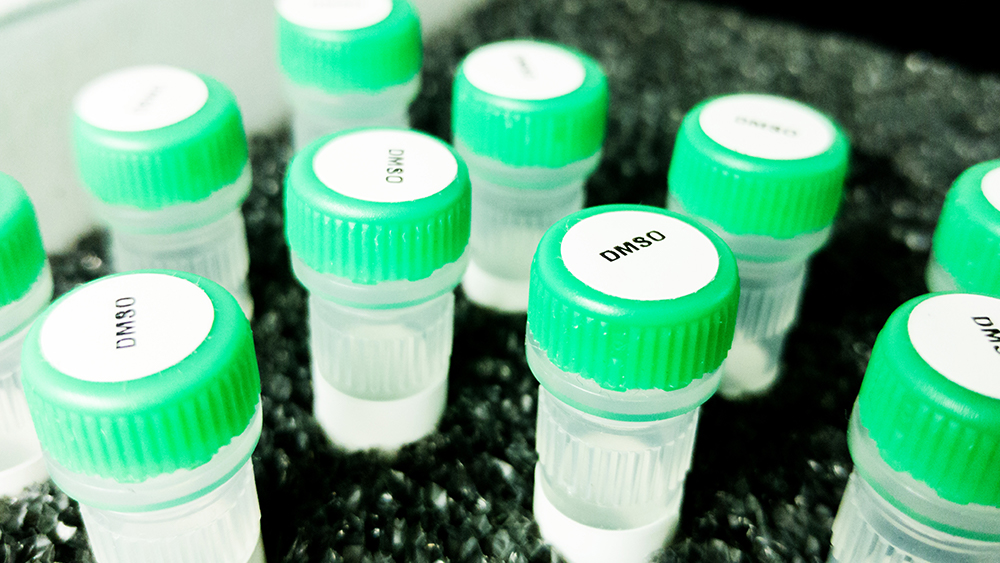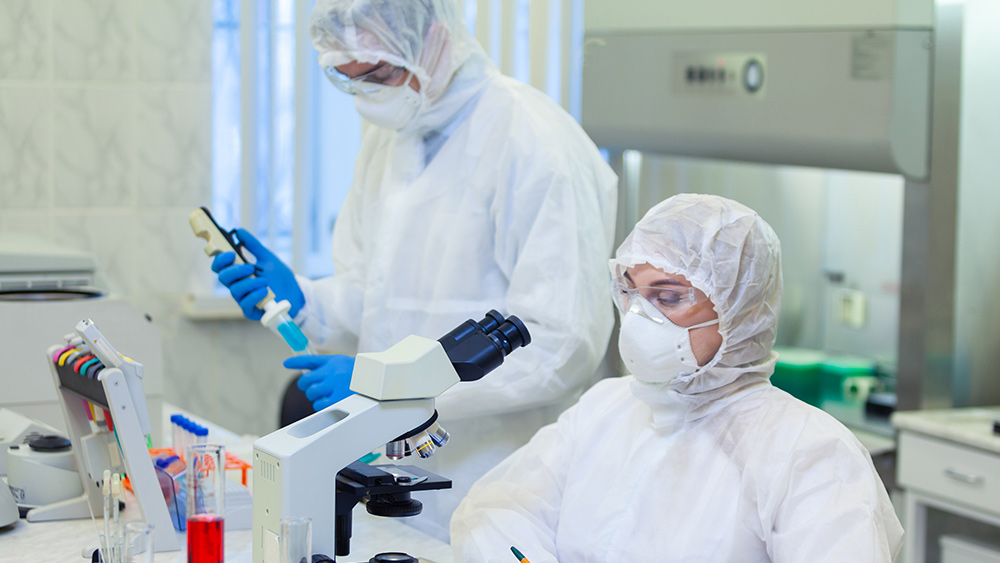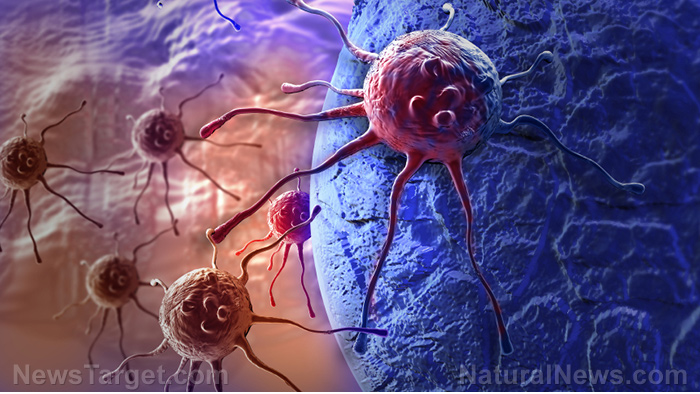Dr. Morton Walker’s “DMSO: Nature’s Healer” explores the healing power of this natural molecule
05/05/2025 / By Ramon Tomey

- Dr. Morton Walker’s book “DMSO: Nature’s Healer” (1993) highlights the remarkable therapeutic benefits of dimethyl sulfoxide (DMSO), showcasing case studies where it alleviated conditions like chronic pain, cervical stenosis and arthritis – often when conventional treatments failed.
- DMSO’s unique ability to penetrate tissues and transport other substances was discovered in the 1960s, but FDA bans on clinical trials (due to unverified animal study risks) and pharmaceutical disinterest stalled its adoption, leaving it caught between medical skepticism and advocacy.
- DMSO has shown promise in treating diverse issues – from burns, herpes and cataracts to neurological disorders (e.g., spinal cord injuries) and even chromosomal conditions like Down’s syndrome, with preclinical studies suggesting potential anti-cancer properties.
- Its small molecular structure enables deep tissue penetration, acting as an anti-inflammatory, free-radical scavenger and drug-delivery enhancer. However, its strong odor complicates clinical trials, and its non-patentable nature limits pharmaceutical investment.
- Despite regulatory and economic hurdles, patient success stories underscore DMSO’s potential. Walker advocates for balanced research and policy reforms to explore this natural compound’s full healing capabilities, challenging conventional medical paradigms.
Dr. Morton Walker’s 1993 book “DMSO: Nature’s Healer” delves into the extraordinary potential of dimethyl sulfoxide (DMSO), a simple yet powerful compound that has fascinated scientists, doctors and patients alike for decades.
The book presents compelling case studies, scientific insights and historical context. It paints a vivid picture of DMSO as both a medical marvel and a subject of intense debate.
The story of DMSO’s healing properties begins with a striking anecdote from 1980 in San Antonio, Texas. Dr. Eva Lee Snead, a family practice specialist, treated her friend Marjorie Saloman, a 32-year-old psychologist suffering from cervical os stenosis.
Unlike conventional treatments that failed to alleviate her excruciating pain, a topical application of DMSO mixed with vitamin E enabled painless dilation of her cervix – sparing Saloman from a scheduled hysterectomy. This case highlights the seemingly miraculous therapeutic potential of DMSO.
First synthesized in 1866 by Russian scientist Alexander Zaytsev, DMSO remained largely overlooked until the 1960s, when Dr. Stanley W. Jacob discovered its unique ability to penetrate skin and cell membranes while transporting other substances with it. This breakthrough ignited enthusiasm for DMSO as a “miracle drug” with applications spanning pain relief, inflammation reduction and cellular repair.
Yet, its journey has been fraught with obstacles. The Food and Drug Administration‘s mid-1960s ban on clinical trials – based on concerns about possible eye damage in animals – soured DMSO’s reputation, despite no human evidence of similar effects. Critics dismissed it as quackery while advocates argued that bureaucratic barriers and pharmaceutical industry disinterest stifled its potential.
Countless individuals have nevertheless experienced life-changing benefits from DMSO. Anna Goldeman, who suffered from bursitis and phantom limb pain following the amputation of her right arm, found unexpected relief after applying DMSO. The 65-year-old saw improvement in her bursitis, and her phantom pain vanished entirely.
Lucas Sheinholtz, suffering from debilitating arthritis, regained mobility within minutes of treatment – though periodic reapplication was needed. Such accounts suggest that DMSO’s mechanism goes beyond temporary relief. It may influence nerve function and tissue repair in ways still being explored.
DMSO’s versatility is staggering. It has been used to treat burns, cataracts, herpes and even chromosomal disorders like Down’s syndrome, where patients such as Melody Clark progressed from severe cognitive impairment to mild disability after DMSO amino acid therapy.
Preclinical studies suggest it may help combat cancer by normalizing malignant cells in vitro. Its ability to cross the blood-brain barrier offers hope for neurological conditions like stroke and spinal cord injuries. Bill Shaal, a young man paralyzed after a severe injury, regained sensation and independence following DMSO treatment.
So, how does DMSO work? Its small molecular structure allows deep tissue penetration, enabling it to act as an anti-inflammatory, free-radical scavenger and immune booster. It stimulates white blood cell production, reduces swelling and even enhances drug delivery to the brain.
However, these very properties complicate traditional clinical trials. DMSO’s distinctive odor makes double-blind studies difficult, creating a paradox. Regulators demand rigorous testing, yet the compound’s characteristics hinder conventional research methods.
Economic factors further complicate DMSO’s path to mainstream acceptance. As a naturally derived, unpatentable substance, it lacks the profit incentive that drives pharmaceutical investment. This leaves patients and practitioners reliant on anecdotal evidence and off-label use, perpetuating a cycle of skepticism and underfunded research.
Yet, the resilience of DMSO’s proponents – and the undeniable impact on individuals like Saloman and Shaal – speaks to its potential. Walker’s book serves as both a testament to natural healing and a call to action.
DMSO represents a frontier in medicine where science, policy and patient advocacy must converge to unlock its full promise. For those suffering from chronic pain, neurological disorders or other ailments, it offers a beacon of hope – a reminder that sometimes, nature’s simplest molecules hold the greatest power to heal.
As research continues, the story of DMSO remains unfinished. It challenges people to reconsider the intersection of innovation and regulation, and to explore unconventional therapies with open minds. In Walker’s words, the journey of DMSO is not merely about a chemical compound – it’s about the enduring quest for healing and the courage to embrace nature’s gifts.
Watch this video about Dr. Morton Walker’s 1993 book “DMSO: Nature’s Healer.”
This video is from the BrightLearn channel on Brighteon.com.
Sources include:
Submit a correction >>
Tagged Under:
alternative medicine, Cures, dimethyl sulfoxide, DMSO, DMSO: Nature's Healer, healing, healing power, health science, Morton Walker, natural cures, natural health, natural medicine, natural molecule, remedies
This article may contain statements that reflect the opinion of the author





















